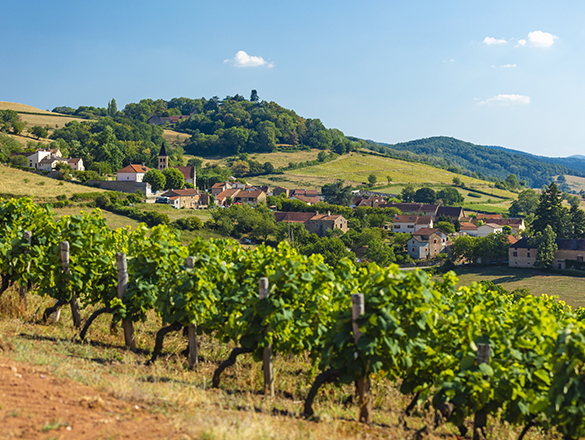
The vineyards of Bourgogne produce some great wines with a historical and international reputation. However, the region is not simply limited to its iconic appellations. In addition to its Village Premier Cru and Grand Cru AOCs, it also produces a range of wonderful Régionale and Village appellations to explore.
You will also find a full list of the Bourgogne’s Climats and lieux-dits on this page.
Check out the complete list of the 84 Bourgogne appellations.
However, your exploration has only just begun. Bourgogne wines have never before offered such high quality. Besides our range of internationally celebrated wines, try some of our lesser-known appellations where there are lots of surprises in store.
And for a fun way to find out more about the wines on offer, try out our “Which Bourgogne wine is right for me?” quiz, or check out Bourgogne Maps to take an interactive tour of the region.
Regional Appellation
VIGNOBLE DU MÂCONNAIS
31 juillet 1937
Whites - Chardonnay.
Red and rosés - Gamay.
Area under vine:
Whites: 9.49 ha
Reds and rosés: 6.99 ha
Annual harvest:
Whites: 53,785 bottles
Reds and rosés: 24,512 bottles
Source: 5-year average, 2017-2021
An additional geographical denomination that is part of the Régionale Mâcon appellation in the Mâconnais. According to the 2005 specifications rules, the name Mâcon-Bray refers to white, red, and rosé wines grown within a defined area in the villages of Blanot, Bray, Chissey-lès-Mâcon, and Cortambert.

A dazzling pale gold color, the white wines from Bray offer an aromatic intensity that is more discreet than other wines of the Mâconnais. This reserve is compensated for by a certain elegance. The wines open slowly with aromas of orchard fruits like apple, quince, and peach, and nuts like almonds. Mineral gunflint notes sometimes emerge. In the mouth, the
texture is ample and generous.
The vines for red wines are mainly grown in granite soil. Gamay grapes bring light garnet colors to the wines with hints of violet that are typical of this varietal. Aromas of red fruit like raspberry give a spontaneous and refreshing deliciousness, while in the mouth, the tannins bring a slightly closed structure that will soften over time.

White: for a perfect flavor combination given the liveliness of this wine on the tongue, opt for an appetizer like a creamy leek tart or risotto verrine. Then allow its acidulated structure to cut through the parsley butter of razor fish à la plancha, gratinated oysters, or snails cooked in garlic butter.
Serving temperatures: 10-11°C as an aperitif, 11-12°C with food.
Red: with its aromatic opulence and fleshy mouth, this wine is a remarkable companion with more fibrous meat dishes such as duck ravioli or braised côte de boeuf (ideally from Charolais). For wine-marinated dishes, choose a hot year such as 2018, which will help soften the acidity of the sauce in a boeuf bourguignon or a snail meurette. To finish a meal, try a washedrind cow’s milk cheese that’s not too old, or something drier like a Palet de Bourgogne or a Cendré de Vergy, to match the freshness of the Gamay.
Serving temperature: 14-15°C.

Located on the most western chain of the Mâconnais, the Mâcon-Bray geographical denomination is isolated to the east by the narrow valley of the Grison and by the Grosne trench to the west and the north. The name “Bray” comes from the Celtic word “bracaria” meaning wetland. Indeed, there are no fewer than seven washing places and fountains here.

In this part of the Haut-Mâconnais, this relief is exposed to the westerly winds, ensuring lower average temperatures and rainfall that often surpasses 850mm per year. The vines grow at between 250 and 400 meters above sea level. The secondary Bray range offers three types of substrate: the Gamay grapes typically grow on granite soil, or on red marl and limestone like Chardonnay grape and Chardonnay vine can also be found on mainly limestone soil.
